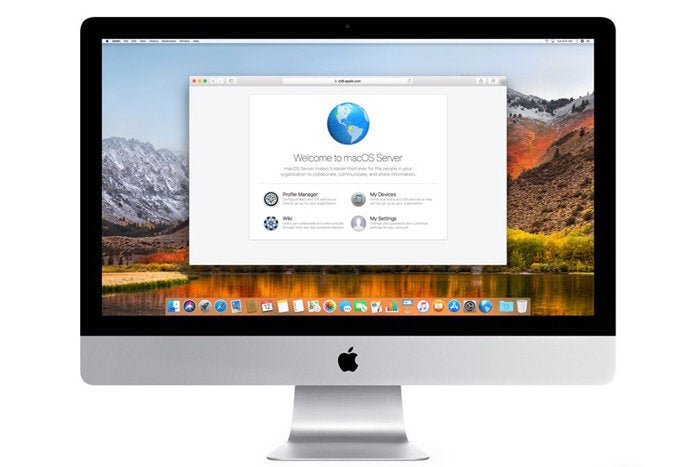[ad_1]
When Apple announced recently that it was discontinuing macOS Server, the move didn’t come as a huge surprise. Apple has been deprecating and removing its core services for a while, and moving others – such as Caching Service – into the macOS itself.
But let’s take a moment to say goodbye and contemplate what we will do without it.
MacOS Server has a long and storied history. It pre-dated Mac OS X by a year, launching initially in 1999. One of its cardinal features was Open Directory, which launched within Mac OS X Panther Server. It was Apple’s answer to Microsoft’s Active Directory and was a powerful solution for managing Macs, user accounts, and any settings on a Mac bound to it. It also integrated nicely with Active Directory, making it a solution for mixed Mac and Windows environments.
Open Directory was one of the last services standing in macOS Server.
At one point, it was a complete solution – particularly for small and mid-size organizations – after the Leopard Server release of 2007, which included a simplified setup option. In fact, as Apple killed off several enterprise hardware products (the xServe and xServe RAID), the focus of macOS Server changed from being a product for large enterprises to one that better serviced small businesses centered around a Mac mini server (though any Mac could run macOS Server).
While lower-end Macs as servers could reliably power smaller organizations, their hardware limited their use in large businesses. The Mac Pro was the only remaining Apple product capable of functioning as a truly enterprise server.
Table of Contents
What was left standing
After Apple removed almost all of macOS Server features in 2018 and suggested some alternatives for organizations still based around it (most of those options were open-source versions Apple had built into macOS Server), very little remained of the main product. The only services still in place were Open Directory and Profile Manager. And Profile Manager was a lightweight Apple device manager console that was more limited than competing enterprise mobility management (EMM) solutions.
What comes next?
Although macOS Server is no longer available through the Mac App Store, the company says existing customers can continue using it if they already have it installed. While that concession might be helpful in the short term for Mac-based or Mac-centric organizations, it isn’t a signal that macOS Server will continue and users can happily keep using it. This is little more than a life raft or stop gap.
Yes, you can use it, but not forever. You need to find a replacement ASAP.
What should you replace macOS Server with?
Since organizations have had four years to migrate most services, ideally to the cloud, the only services that will likely need to be replaced now are Open Directory and Profile Manager.
Your best option for replacing Profile Manager is to use a third-party enterprise mobile management (EMM) vendor. It’s important to note that EMM solutions that can manage iOS devices and Apple TVs can also manage Macs.
For organizations that are Mac-only or Mac-specific, options include JAMF, Kandji, SimpleMDM, and Addigy.
For small businesses, Apple has created a base EMM tool known as Apple Business Essentials; it provides cloud-based Apple device management, but is limited to organizations with 500 or fewer employees.
Multi-platform and Windows-based networks should consider EMM tools from the primary vendor that’s already a part of your enterprise stack (Microsoft, VMWare, Citrix, Ciso, etc.) or choose another product if it delivers feature or user-experience benefits you’d like to have but that the primary vendor does not offer.
Apple Business Manager and Apple School Manager
Apple does have some cloud-based tools for larger businesses in the form Apple Business Manager and its companion Apple School Manager. Organizations typically use these in conjunction with Managed Apple IDs as an authentication and user-management solution. You can directly interact with these tools — and in some cases, you will need to do just that, depending on your user/device authenticator.
Apple Business Manager, for example can link to Azure AD. If you use a different cloud-based authentication solution (such as Google Workspace or Okta), you’ll need to check if they can integrate with Apple Business or School Manager. One reason to use a third-party EMM solution is that these tools will generally manage any user/device authentication and access capabilities and manage and secure Macs and other Apple devices.
Going forward
Although macOS Server carries some nostalgia for people (including myself) who have used it for years, Apple has long made it clear that it intended to move out of the data center and head toward cloud services. The good news, though, is that you have plenty of options, even if your organization is still built around macOS Server.
Copyright © 2022 IDG Communications, Inc.
[ad_2]

Leave a Reply